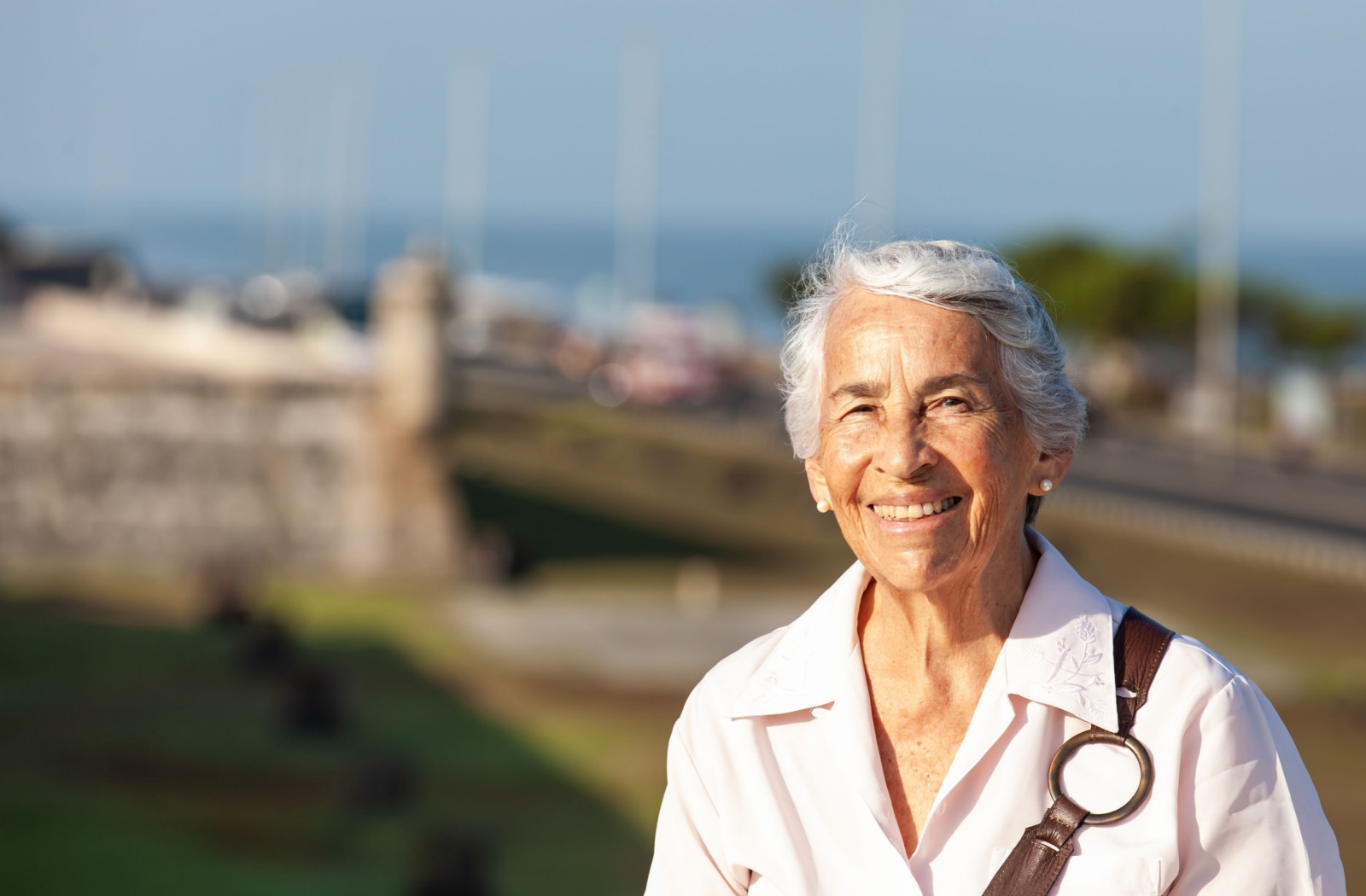Growing older doesn’t mean slowing down, it’s an opportunity to lean into new experiences, foster connection, and embrace a vibrant lifestyle. It’s a chance to grow through connection and find renewed purpose. With longer life expectancy and growing awareness around wellness, today’s seniors are choosing to stay engaged in ways that nurture both body and mind.
The idea behind this lifestyle is called active aging. It promotes staying physically capable, socially connected, emotionally grounded, and mentally stimulated as we grow older, making this stage of life more vibrant and fulfilling.
What Is Active Aging?
Active aging is a whole-person approach to aging that emphasizes wellness, participation, and independence. Originally defined by the World Health Organization, it centers on maintaining a high quality of life through positive lifestyle choices and community engagement.
Aging is not something to avoid. It’s something we embrace with vitality and purpose. Active aging means staying mobile, staying curious, and staying connected to the people and activities that bring joy.
Why Active Aging Matters
Choosing to age actively is choosing to stay engaged with life. When seniors participate in regular movement, nurture their minds, and build meaningful connections, they tend to experience better overall health, emotional resilience, and cognitive strength.
But beyond the science, active aging also fosters fulfillment. It creates space for pursuing goals, enjoying hobbies, and maintaining autonomy, all of which help cultivate confidence, dignity, and well-being throughout the aging process.
The Benefits of Active Aging
Active aging contributes to many facets of health and happiness. It’s more than just staying physically fit—it’s about thriving in all aspects of daily life.
Physical Well-Being
Movement is one of the most powerful tools for maintaining mobility and independence. Staying active through movement like stretching, building strength, or going for a walk can make a real difference. It supports balance, joint health, and overall well-being.
Even low-impact activities can make a noticeable difference, enhancing circulation, sleep quality, and energy levels throughout the day.
Cognitive Engagement
Keeping the mind sharp is just as important as keeping the body strong. Cognitive stimulation—like reading, puzzles, or learning new skills, supports memory, attention, and mental flexibility.
Engaging the brain on a regular basis can also lower the risk of cognitive decline, helping seniors feel more alert, capable, and confident as they navigate their day.
Emotional Health
Aging well involves nurturing emotional wellness. When older adults take time for activities that spark joy or offer reflection, like meditation, journaling, or spiritual practices—they’re more likely to feel calm, optimistic, and grounded.
These habits can also provide a healthy outlet for managing stress and finding peace during periods of transition or change.
Social Fulfillment
Staying socially engaged reduces feelings of loneliness and boosts emotional resilience. Spending time with friends, family, or in group activities helps create meaningful connections that add joy, routine, and encouragement to daily life.
Regular interaction also helps sharpen communication skills and keeps conversations flowing, which benefits cognitive and emotional wellness alike.
Nutrition’s Role in Active Aging
Nutrition is the foundation of any active lifestyle. Maintaining a nutrient-rich diet helps older adults maintain physical strength, mental clarity, and immune function, supporting energy and resilience throughout the day.
Smart Food Choices
A well-rounded diet supports vitality in seniors. Prioritize:
- Bright fruits and vegetables for vitamins, fiber, and disease-fighting antioxidants
- Diverse proteins like eggs, fish, beans, and dairy to maintain muscle and support recovery
- Whole grains like quinoa, oats, and brown rice for steady energy and digestion
- Healthy fats from sources like olive oil, avocado, and nuts to promote brain health
Eating well also enhances mood and sleep, contributing to a more balanced and energetic lifestyle.
Building Healthy Habits
Healthy eating doesn’t have to feel overwhelming. Creating sustainable habits is often about consistency, not complexity. Small daily choices can lead to big improvements in energy, focus, and overall well-being.
Here are a few simple ways to build strong nutritional routines:
- Plan and prep ahead: Batch-cook grains or proteins, wash fruits and vegetables in advance, or portion out snacks for the week to make healthy eating effortless.
- Stay hydrated: Make sure to drink water regularly, and supplement with herbal teas or water-rich foods like cucumbers, melons, and citrus for variety and flavor.
- Prioritize whole foods: Choose fresh, colorful produce, lean proteins, and whole grains instead of pre-packaged or heavily processed meals.
- Reduce added sugars and sodium: Cook at home when possible, read nutrition labels, and flavor meals with herbs, spices, and citrus instead of salt or sweeteners.
- Share the experience: Eating with others not only improves appetite and digestion—enjoying meals with others helps support social engagement and satisfaction.
By focusing on ease, enjoyment, and consistency, older adults can build habits that support long-term health, without feeling like they’re giving anything up.
Exploring Hobbies & Personal Interests
Active aging also means rediscovering passions and diving into hobbies that enrich the soul. These pursuits offer structure, creativity, and joy, while boosting mental engagement and self-expression.
Painting, writing, gardening, tai chi, and learning a musical instrument are all hobbies that keep the mind stimulated and the heart fulfilled. They create moments of calm, curiosity, and pride, which are essential to a balanced life.
Participating in Outings & Excursions
Trying new things is a powerful part of active aging. Local excursions can spark excitement, confidence, and connection. From horseback riding and kayaking to wine tastings, ziplining, or even skydiving, these shared experiences promote both physical activity and emotional vitality.
Engaging in new challenges helps keep the mind sharp, the body moving, and the spirit energized. No matter your age, stepping outside your comfort zone can reignite curiosity and create lasting memories.

Tips to Start Living Actively
Beginning an active lifestyle doesn’t require a dramatic overhaul. The key is to start small, listen to your body, and choose activities that bring satisfaction.
- Take a walk each morning or after meals to promote movement and reflection
- Try a group class for fitness or art to combine wellness with social connection
- Volunteer locally for a renewed sense of purpose and community engagement
- Stick to a routine that includes self-care, rest, and intentional activities
- Celebrate progress rather than perfection. Every step counts
What matters most is consistency and finding joy in the process.
A Community That Empowers Active Aging
Thriving in older adulthood is easier with the right support system, and the right setting. Communities designed for active aging empower residents to live fully, with access to everything they need to stay engaged, energized, and connected.
From personalized fitness through WellFIT to relaxation and rejuvenation at The Spa at Holbrook, residents enjoy a well-rounded approach to wellness. Regular events, curated group outings, and interest-based activities keep the calendar full of opportunities for discovery and joy. Whether it’s attending a cooking demonstration, joining a local excursion, or relaxing in one of the many shared lounges or gathering spaces, seniors find countless ways to stay social and involved.
At Holbrook Woodstock, active aging isn’t just encouraged—it’s woven into everyday life. With an emphasis on health, purpose, and community, residents have the freedom to pursue what makes them feel most alive. Schedule a visit today and experience the vibrant lifestyle that supports every dimension of aging well.
